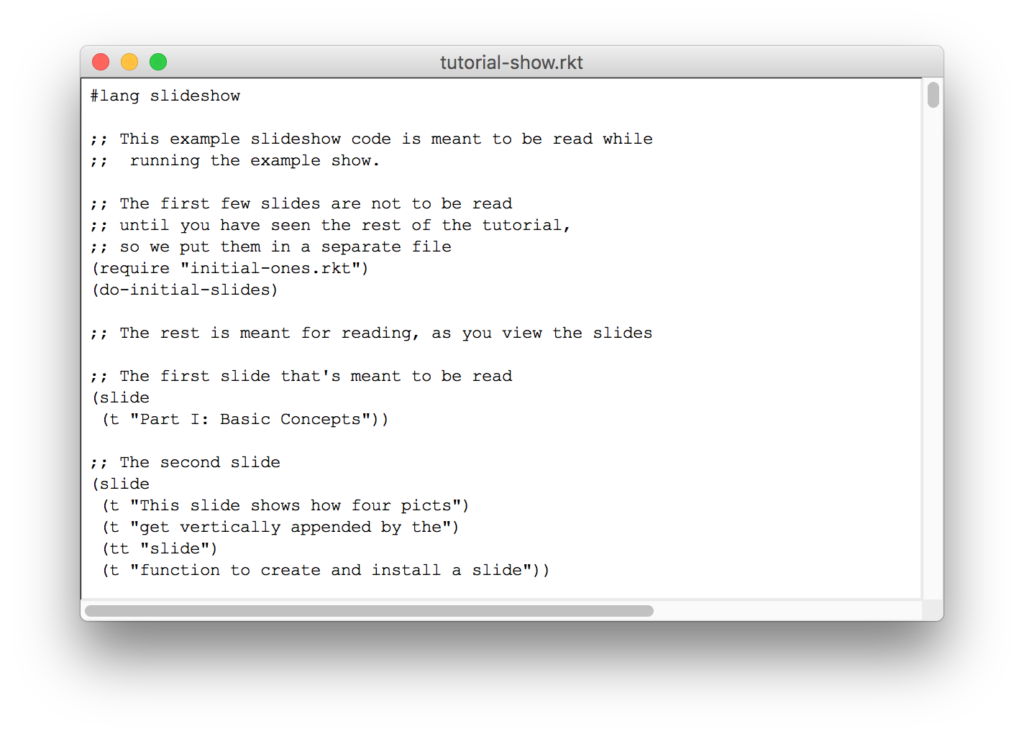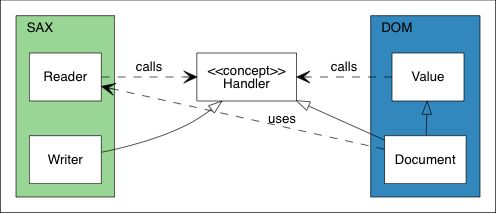Python3.7 加入了一个新的 module:dataclasses。可以简单的理解成“支持默认值、可以修改的tuple”( “mutable namedtuples with defaults”)。其实没什么特别的,就是你定义一个很普通的类,@dataclass 装饰器可以帮你生成 __repr__ __init__ 等等方法,就不用自己写一遍了。但是此装饰器返回的依然是一个 class,这意味着并没有带来任何不便,你依然可以使用继承、metaclass、docstring、定义方法等。
先展示一个 PEP 中举的例子,下面的这段代码(Python3.7):
|
|
@dataclass class InventoryItem: '''Class for keeping track of an item in inventory.''' name: str unit_price: float quantity_on_hand: int = 0 def total_cost(self) -> float: return self.unit_price * self.quantity_on_hand |
@dataclass 会自动生成
1 2 3 4 5 6 7 8 9 10 11 12 13 14 15 16 17 18 19 20 21 22 23 24 25 26 27 28 29 30 |
def __init__(self, name: str, unit_price: float, quantity_on_hand: int = 0) -> None: self.name = name self.unit_price = unit_price self.quantity_on_hand = quantity_on_hand def __repr__(self): return f'InventoryItem(name={self.name!r}, unit_price={self.unit_price!r}, quantity_on_hand={self.quantity_on_hand!r})' def __eq__(self, other): if other.__class__ is self.__class__: return (self.name, self.unit_price, self.quantity_on_hand) == (other.name, other.unit_price, other.quantity_on_hand) return NotImplemented def __ne__(self, other): if other.__class__ is self.__class__: return (self.name, self.unit_price, self.quantity_on_hand) != (other.name, other.unit_price, other.quantity_on_hand) return NotImplemented def __lt__(self, other): if other.__class__ is self.__class__: return (self.name, self.unit_price, self.quantity_on_hand) < (other.name, other.unit_price, other.quantity_on_hand) return NotImplemented def __le__(self, other): if other.__class__ is self.__class__: return (self.name, self.unit_price, self.quantity_on_hand) <= (other.name, other.unit_price, other.quantity_on_hand) return NotImplemented def __gt__(self, other): if other.__class__ is self.__class__: return (self.name, self.unit_price, self.quantity_on_hand) > (other.name, other.unit_price, other.quantity_on_hand) return NotImplemented def __ge__(self, other): if other.__class__ is self.__class__: return (self.name, self.unit_price, self.quantity_on_hand) >= (other.name, other.unit_price, other.quantity_on_hand) return NotImplemented |
引入dataclass的理念
Python 想简单的定义一种容器,支持通过的对象属性进行访问。在这方面已经有很多尝试了:
- 标准库的
collections.namedtuple
- 标准库的
typing.NamedTuple
- 著名的 attr 库
- 各种 Snippet,问题和回答等
那么为什么还需要 dataclass 呢?主要的好处有:
- 没有使用 BaseClass 或者 metaclass,不会影响代码的继承关系。被装饰的类依然是一个普通的类
- 使用类的 Fields 类型注解,用原生的方法支持类型检查,不侵入代码,不像 attr 这种库对代码有侵入性(要用 attr 的函数将一些东西处理)
dataclass 并不是要取代这些库,作为标准库的 dataclass 只是提供了一种更加方便使用的途径来定义 Data Class。以上这些库有不同的 feature,依然有存在的意义。
基本用法
dataclasses 的 dataclass 装饰器的原型如下:
|
|
def dataclass(*, init=True, repr=True, eq=True, order=False, unsafe_hash=False, frozen=False) |
很明显,这些默认参数可以控制是否生成魔术方法。通过本文开头的例子可以看出,不用加括号也可以调用。
通过 field 可以对参数做更多的定制化,比如默认值、是否参与repr、是否参与hash等。比如文档中的这个例子,由于 mylist 的缺失,就调用了 default_factory 。更多 field 能做的事情参考文档吧。
|
|
@dataclass class C: mylist: List[int] = field(default_factory=list) c = C() c.mylist += [1, 2, 3] |
此外,dataclasses 模块还提供了很多有用的函数,可以将 dataclass 转换成 tuple、dict 等形式。话说我自己重复过很多这样的方法了……
|
|
@dataclass class Point: x: int y: int @dataclass class C: mylist: List[Point] p = Point(10, 20) assert asdict(p) == {'x': 10, 'y': 20} c = C([Point(0, 0), Point(10, 4)]) assert asdict(c) == {'mylist': [{'x': 0, 'y': 0}, {'x': 10, 'y': 4}]} |
Hook init
自动生成的 __init__ 可以被 hook。很简单,自动生成的 __init__ 方法会调用 __post_init__
|
|
@dataclass class C: a: float b: float c: float = field(init=False) def __post_init__(self): self.c = self.a + self.b |
如果想传给 __post_init__ 方法但是不传给 __init__ ,可以使用一个特殊的类型 InitVar
|
|
@dataclass class C: i: int j: int = None database: InitVar[DatabaseType] = None def __post_init__(self, database): if self.j is None and database is not None: self.j = database.lookup('j') c = C(10, database=my_database) |
不可修改的功能
Python 没有 const 类似的东西,理论上任何东西都是可以修改的。如果非要说不能修改的实现呢,这里有个比较著名的实现。只有不到10行代码。
但是有了 dataclass ,可以直接使用 @dataclass(frozen=True) 了。然后装饰器会对 Class 添加上 __setattr__ 和 __delattr__ 。Raise 一个 FrozenInstanceError。缺点是会有一些性能损失,因为 __init__ 必须通过 object.__setattr__ 。
继承
对于有继承关系的 dataclass,会按照 MRO 的反顺序(从object开始),对于每一个基类,将在基类找到的 fields 添加到顺序的一个 mapping 中。所有的基类都找完了,按照这个 mapping 生成所有的魔术方法。所以方法中这些参数的顺序,是按照找到的顺序排的,先找到的排在前面。因为是先找的基类,所以相同 name 的话,后面子类的 fields 定义会覆盖基类的。比如文档中的这个例子:
|
|
@dataclass class Base: x: Any = 15.0 y: int = 0 @dataclass class C(Base): z: int = 10 x: int = 15 |
那么最后生成的将会是:
|
|
def __init__(self, x: int = 15, y: int = 0, z: int = 10): |
注意 x y 的顺序是 Base 中的顺序,但是 C 的 x 是 int 类型,覆盖了 Base 中的 Any。
可变对象的陷阱
在前面的“基本用法”一节中,使用了 default_factory 。为什么不直接使用 [] 作为默认呢?
老鸟都会知道 Python 这么一个坑:将可变对象比如 list 作为函数的默认参数,那么这个参数会被缓存,导致意外的错误。详细的可以参考这里:Python Common Gotchas。
考虑到下面的代码:
|
|
@dataclass class D: x: List = [] def add(self, element): self.x += element |
将会生成:
|
|
class D: x = [] def __init__(self, x=x): self.x = x def add(self, element): self.x += element assert D().x is D().x |
这样无论实例化多少对象,x 变量将在多个实例之间共享。dataclass 很难有一个比较好的办法预防这种情况。所以这个地方做的设计是:如果默认参数的类型是 list dict 或 set ,就抛出一个 TypeError。虽然不算完美,但是可以预防很大一部分情况了。
如果默认参数需要是 list,那么就用上面提到的 default_factory 。
参考资料:
- PEP 557
- dataclass标准库文档







